France Says "Merci!" to Murray Codman
February 13, 2014
By Sandra Coopersmith
Features Writer
French lesson for today: "À tout seigneur, tout honneur" (honor to whom honor is due).
"I just did what I had to do," said Technical Sergeant Murray Codman, a member of Jewish War Veterans of America, Culver City Post 617 and possessor of the Distinguished Flying Cross, the Air Medal with Five Oak Leaf Clusters, the Presidential Unit Citation, the EAME Campaign Medal and various other campaign medals.
On Jan. 30 that impressive collection gained yet another medal.
During a memorable and moving ceremony at historic Bob Hope Patriotic Hall in downtown Los Angeles that was replete with dignitaries, this 91-year-old hero of WWII, together with 10 other valiant veterans, received France's highest award, the Legion of Honor.
Codman's cheering section of family and friends included Culver City residents Neil Rubenstein and Theodorsia Smith.
The presentations, which were made by Axel Cruau, Consul General of France in Los Angeles, were followed by Certificates of Recognition from the County of Los Angeles and Commendations from the City of Los Angeles.
Codman evoked some chuckles when he was heard to murmur, "I would have worn my uniform but it shrunk."
He served as Flight Engineer and Top Turret Gunner on a B-17 Flying Fortress in the 447th Bomb Group of the 710th Squadron of the Eighth Air Force, based in England.
"I was originally classified to be a mechanic and was sent to mechanics' school," Codman explained. "It took eight people on the ground to keep one person in the air. I volunteered to be on an airplane. They were always looking for gunners because they lost so many. 26,000 got killed in the Eighth Air Force. 28,000 became prisoners of war. I was lucky, very lucky."
His original assignment was 25 missions. Codman completed 35, volunteering for the additional 10. "I never cut my hair while flying combat," he said. "That was my thing, although the pilot would ask me all the time to cut it."
33 missions involved the bombing of German military factories and installations. The other two provided the Maquis, guerrillas in the French Resistance, with supplies.
"The Maquis undermined the Germans by damaging equipment, blowing up troop trains and sabotaging their militia," Codman said. "I did two missions to supply them with guns, hand grenades, bullets and so forth, and dropped these by parachute at a height of 100 feet off the ground. We normally flew at around 25,000 feet so this was the only time I actually saw people on the ground.
"We had these canisters of supplies in our bomb bay instead of bombs on these two missions. The women loved the silk parachutes and made clothes out of them."
He named his airplane Big Shorty, although "normally the pilot names it, generally after a wife or girlfriend." But one day Codman, after a session of liquid therapy at the NCO club, grabbed a can of paint and "the next day we flew a mission in Big Shorty."
Every crew had an engineer and Codman functioned as such on his flights.
"If anything that got damaged in the flight could be repaired, it was my job to fix it," he said. "On two separate missions the bomb bay doors opened, we dropped our bombs, but the doors would not close. Normally this would make us fall behind because of drag on the airplane. When a bomber was on its own, the Germans would immediately shoot it down. But there's a crank you can do by hand, which I did, so we were able to keep up.
"While cranking and looking down, I could see all the flak coming up at me. When I got back to base I told the crew chief, but it worked perfectly on the ground. On the next mission, same airplane, same thing happened. This second time I told the crew chief I wanted the motor replaced and he did it.
"The temperature at 20,000 to 25,000 feet was 50 below zero, and that's the level at which we were flying. When they took the motor out they discovered someone had used it as a urinal, so when the bomb bay doors opened the temperature froze the liquid on the motor, which is why the doors wouldn't close."
Codman described "the worst thing I ever saw. An airplane had caught a bunch of flak and its left wing broke in half. I saw it as I was flying 30 feet away. It was hit at the exact position of the Ball Turret Gunner. He didn't have a parachute on and neither did I.
"When an airplane goes down, 10 people go down with it. I wore a harness without the nearby parachute clipped on because of cramped space. If my airplane was going down I'd get pinned against the wall because of centrifugal force, so I wouldn't be able to get out anyway. When I flew I always mentally bought a round trip ticket and it seemed to work." Leave it to a mechanic to devise an effective coping mechanism.
Two wartime souvenirs were loss of hearing and skin problems.
"In between the four engines and where I was positioned, the noise was tremendous," Codman said, "and at 10,000 feet and up we wore an oxygen mask. For five years after I got out my face broke out from the effects of the oxygen mask."
After returning from overseas he was assigned to Chanute Air Force Base in Illinois outside of Chicago, where he taught aircraft instruments repair. "Around then jet engines were first coming out and I was chosen to become an instructor to train mechanics for them," he said. "The first was a P-89."
As for Big Shorty, "it was picked up by another crew when we finished our assignment. It went down in the North Sea on its fifth mission but stayed afloat and everyone survived, so maybe the name brought good luck."

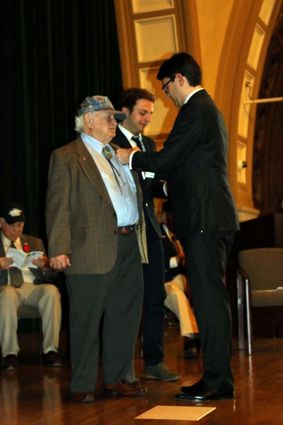
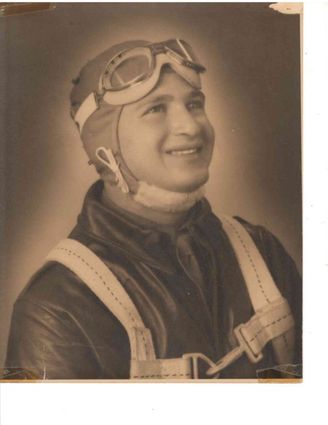
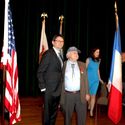
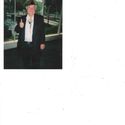
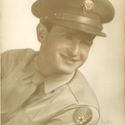
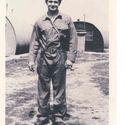
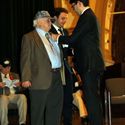



















Reader Comments(3)
wemglm writes:
A most excellent article, Sandra. These dear men of The Greatest Generation certainly deserve our thanks, appreciation, and recognition for their contributions and sacrifice to our great country. Thank you, Sandra, for reporting Murray Codman's years of service and the recent ceremony where he received his much deserved latest medal, France's highest award, The Legion of Honor.
02/13/2014, 8:19 am
jer writes:
great article
02/09/2014, 11:03 am
Karinjoy writes:
Oh, Sandra, this is wonderful! I love the stories and the integrity and bravery of this very special generation of men....Kudos to you for such a well-written and interesting article.
02/08/2014, 6:42 pm